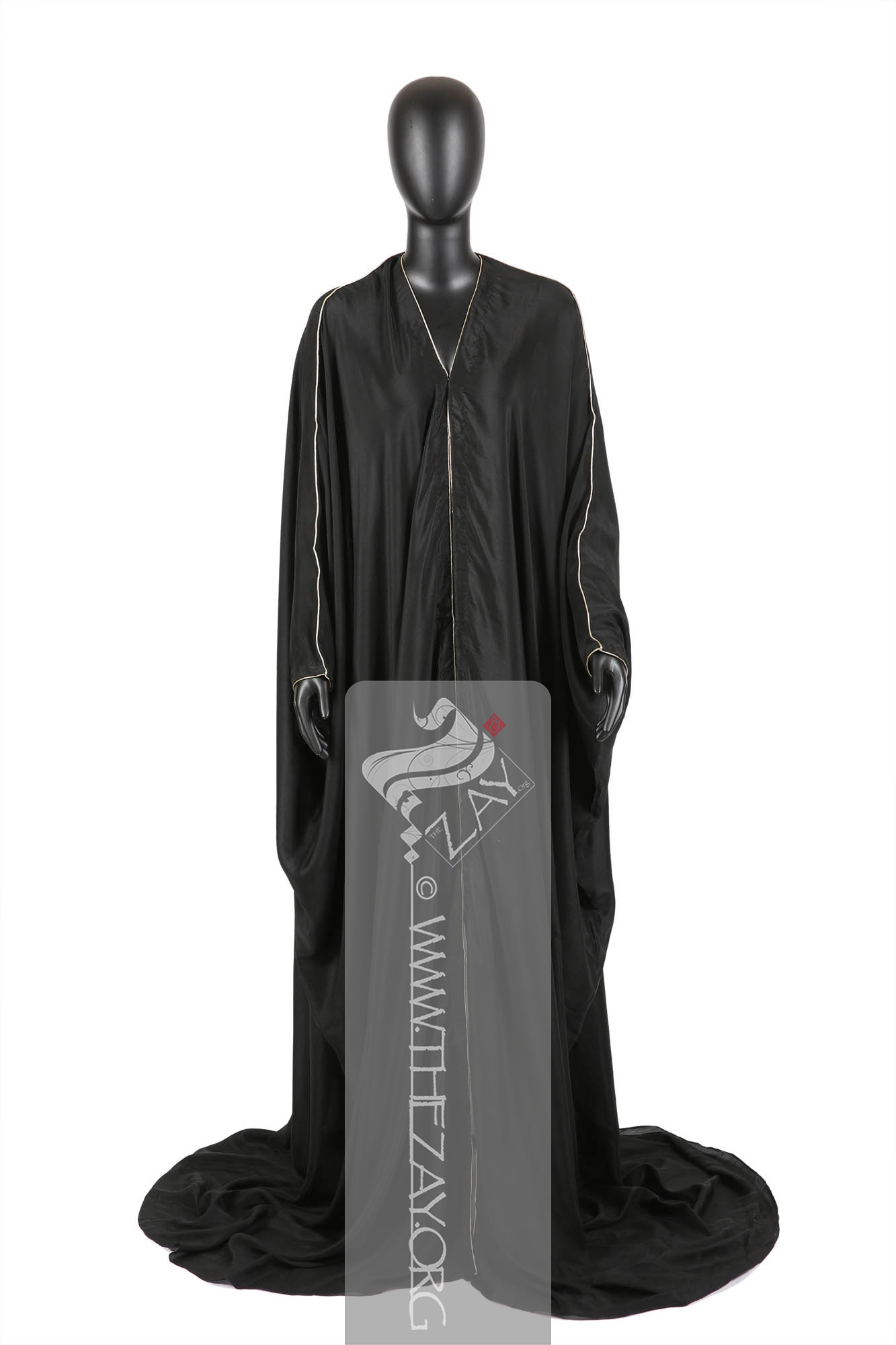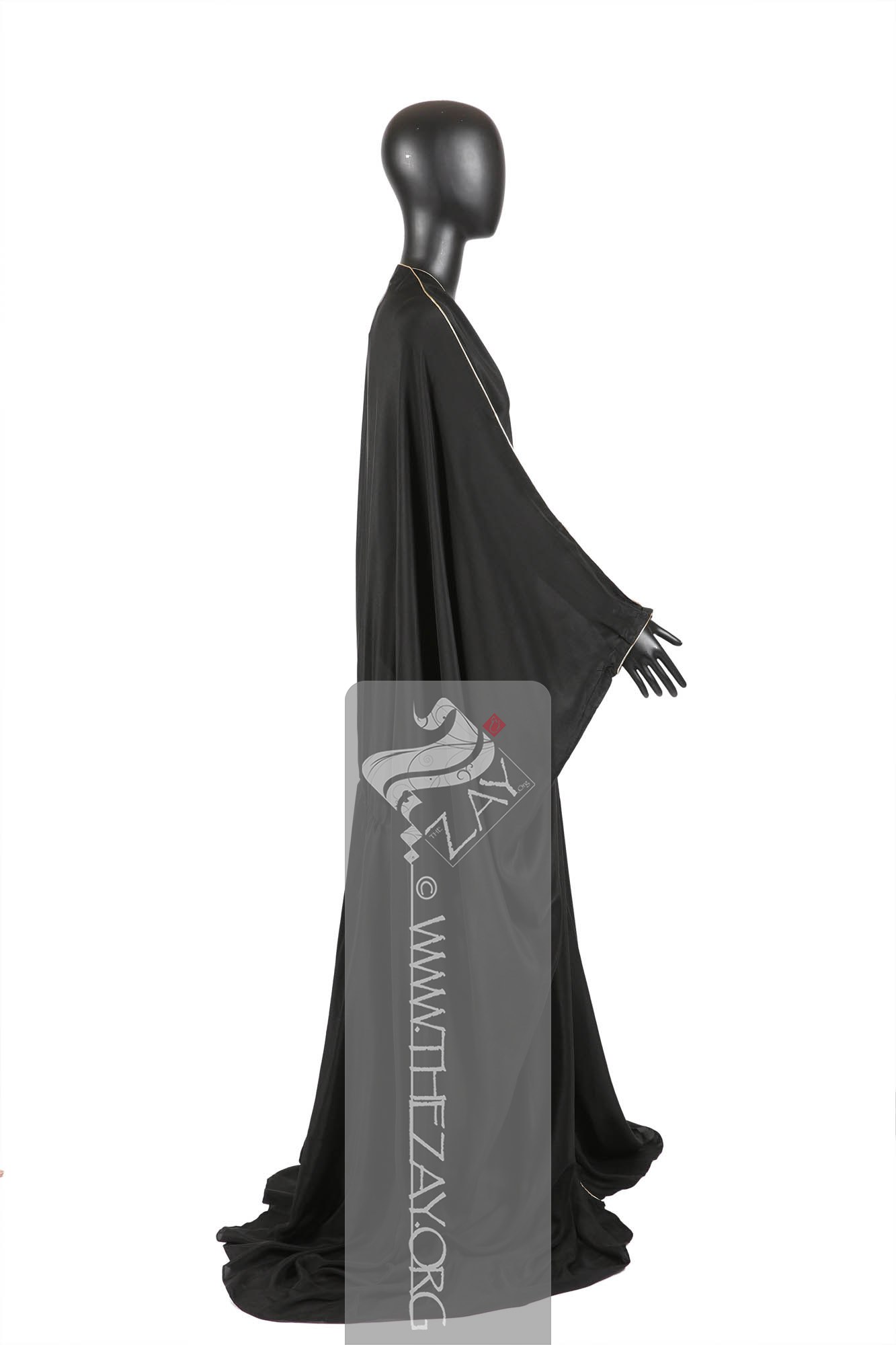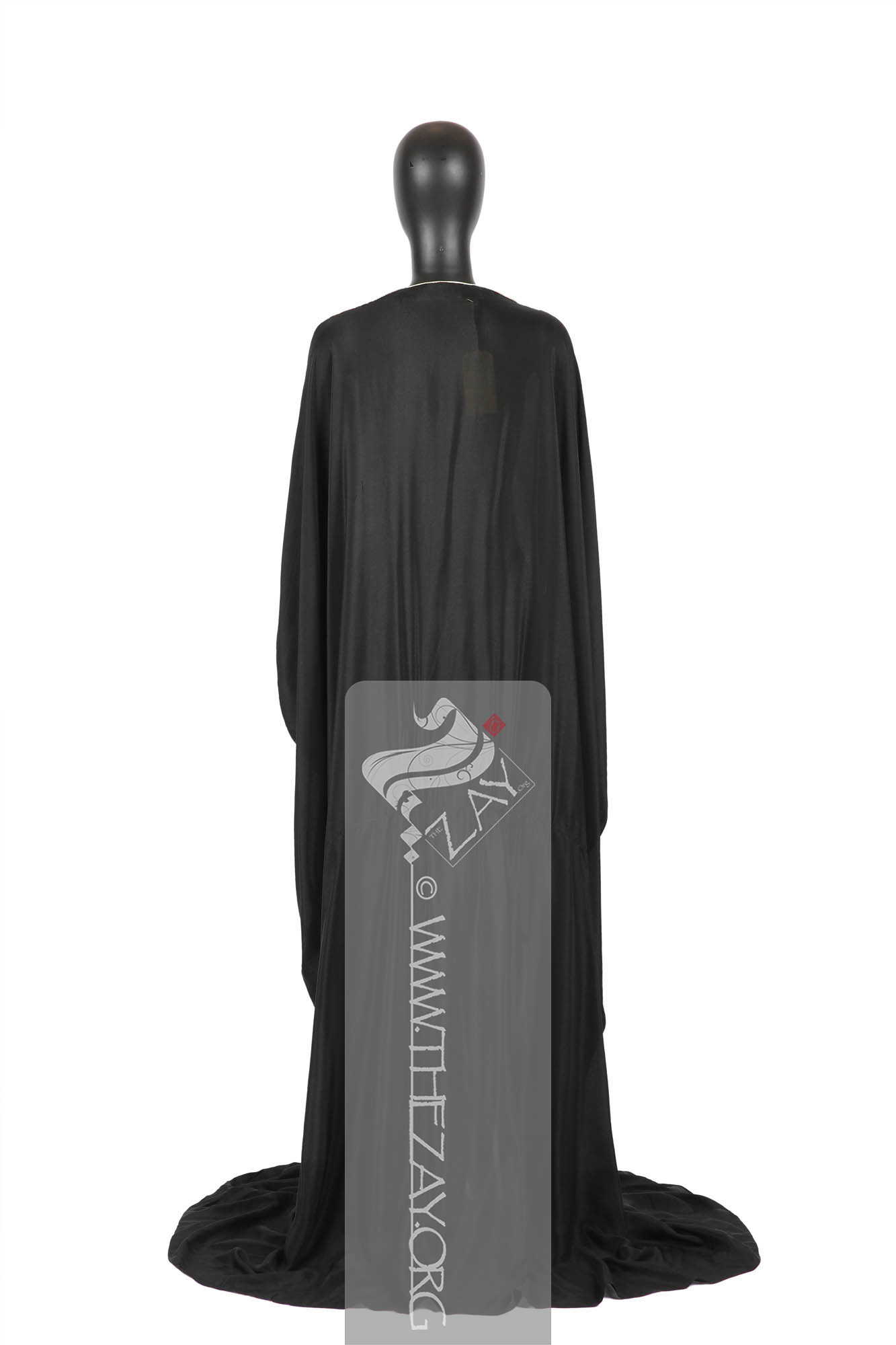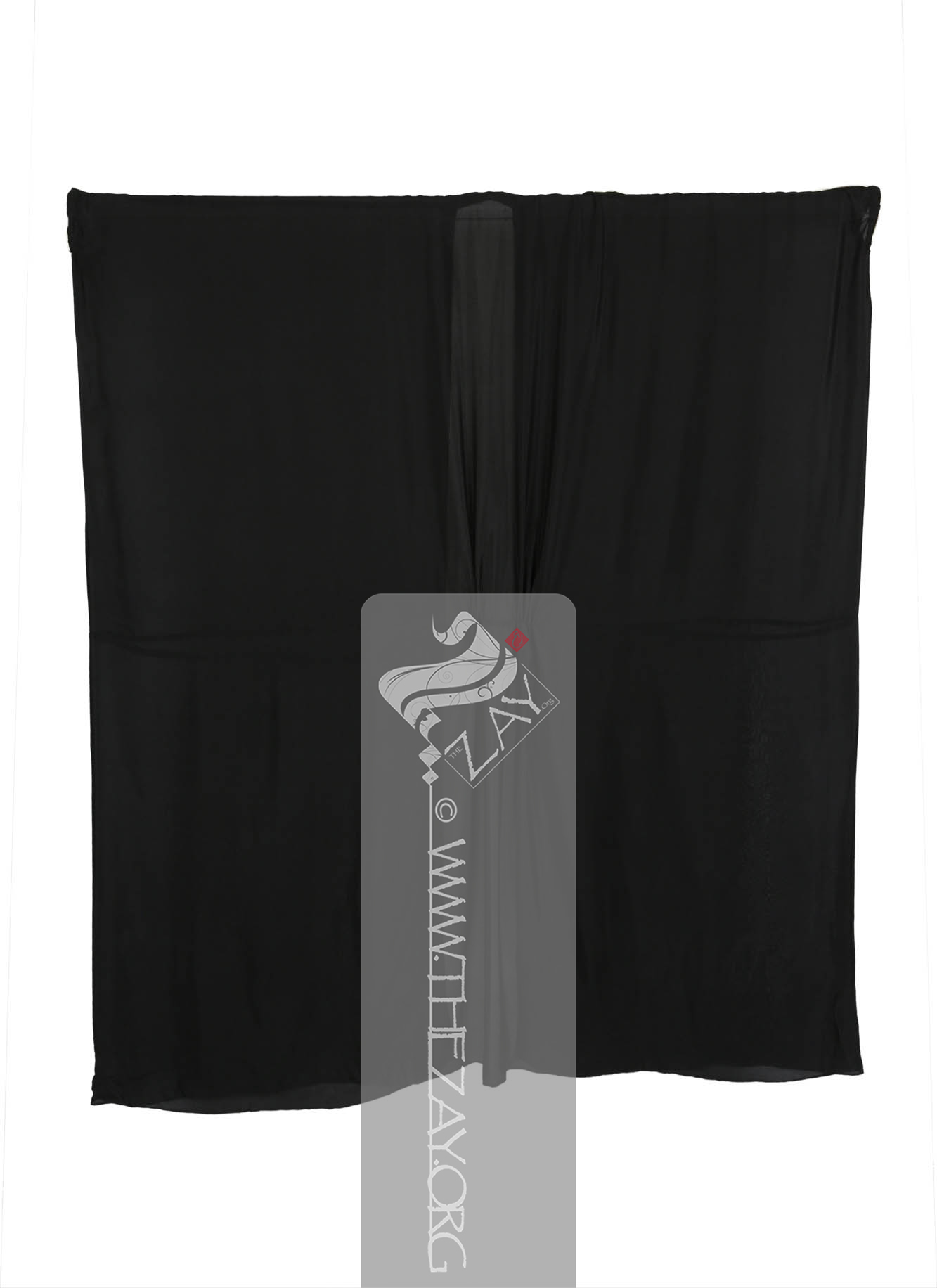










| Local Name | Abayah um_qitan |
| Object Category | Cloak |
| Gender | Female |
| Date of object | Circa 1965 -1970 |
| Place Of orgin | Lebanon |
| Region | Qatar |
| Object Range | Qatar, Bahrain, Emirates, Saudi Arabia, Kuwait, Iraq |
| Dimensions | Length: 165cm Width:162cm |
| Materials | Silk |
| Technique | Machine Stitched |
| Color | |
| Provenance | Gifted, Mr. Jabir al Hajiri, Qatar, 2017 |
| Location | The Zay Zay: (Arabic: costume, Pl. azyaā’), a set of clothes in a style typical of a particular country or historical period. Initiative |
| Status | In storage |
| ZI number | ZI2017.50037.1 QATAR |
Ṭariq: (Arabic; Synonym: tulle_bi_talli; talli; badla; khus_dozi ), series of small metal knots made on a woven net ground as embellishment. The term is commonly used in the Levant Arab region specifically in Lebanon.
El Mutwalli Dr. Reem TariqṬariq: (Arabic; Synonym: tulle_bi_talli; talli; badla; khus_dozi ), series of small metal knots made on a woven net ground as embellishment. The term is commonly used in the Levant Arab region specifically in Lebanon.
el Mutwallī: Founder (CEO) of the Zay Zay: (Arabic: costume, Pl. azyaā’), a set of clothes in a style typical of a particular country or historical period. Initiative, a public figure, speaker and author. An expert curator and consultant in Islamic art and architecture, interior design, historic costume, and UAE heritage. through Instagram, due to a mutual passion for culture and heritage, and offered to help by sending a few articles as a contribution to the Zay Zay: (Arabic: costume, Pl. azyaā’), a set of clothes in a style typical of a particular country or historical period. collection, including this cloak (abayah ‘Abāyah: (Arabic: cloak, Pl. ‘abāyāt, or ‘Ibī. In Classical Arabic: ‘abā’ah, pl: ‘abā’āt, synonyms: ‘Abā, ‘abāh, ‘abāt, dafah Daffah : (Arabic: side, synonyms: ‘Abā, ‘abāyah, ‘abāh, ‘abāt, bisht or mishlaḥ), long, wide, and sleeveless outer cloak worn in public by both sexes. In time this article of dress evolved and changed in shape, style, and function., bisht, or mishlaḥ), long, wide, and sleeveless outer cloak worn in public by both sexes. In time this article of dress evolved and changed in shape, style, and function.). He recalled he had bought it sometime in the past from a traveling salesman (Lilam Līlām or Laylām : (In Urdu. The origin is Nīlām: means bidding). A slang term for an Asian street salesman known to most Gulf countries. In the past, he used to go around the houses to sell fabrics and clothes which he carried in a large parcel on his back. He called out “Nīlām”. The word has been changed to Līlām.) or from the flea market ( Suq_Al Haraj Sūq_al Ḥarāj: (Arabic. suq: market, a place where goods are brought to buy and sell, pl: aswāq). This market has several names according to the country. In the Gulf, it is called Sūq al Ḥarāj, and in Lebanon, Sūq Barghūt.) in Doha.